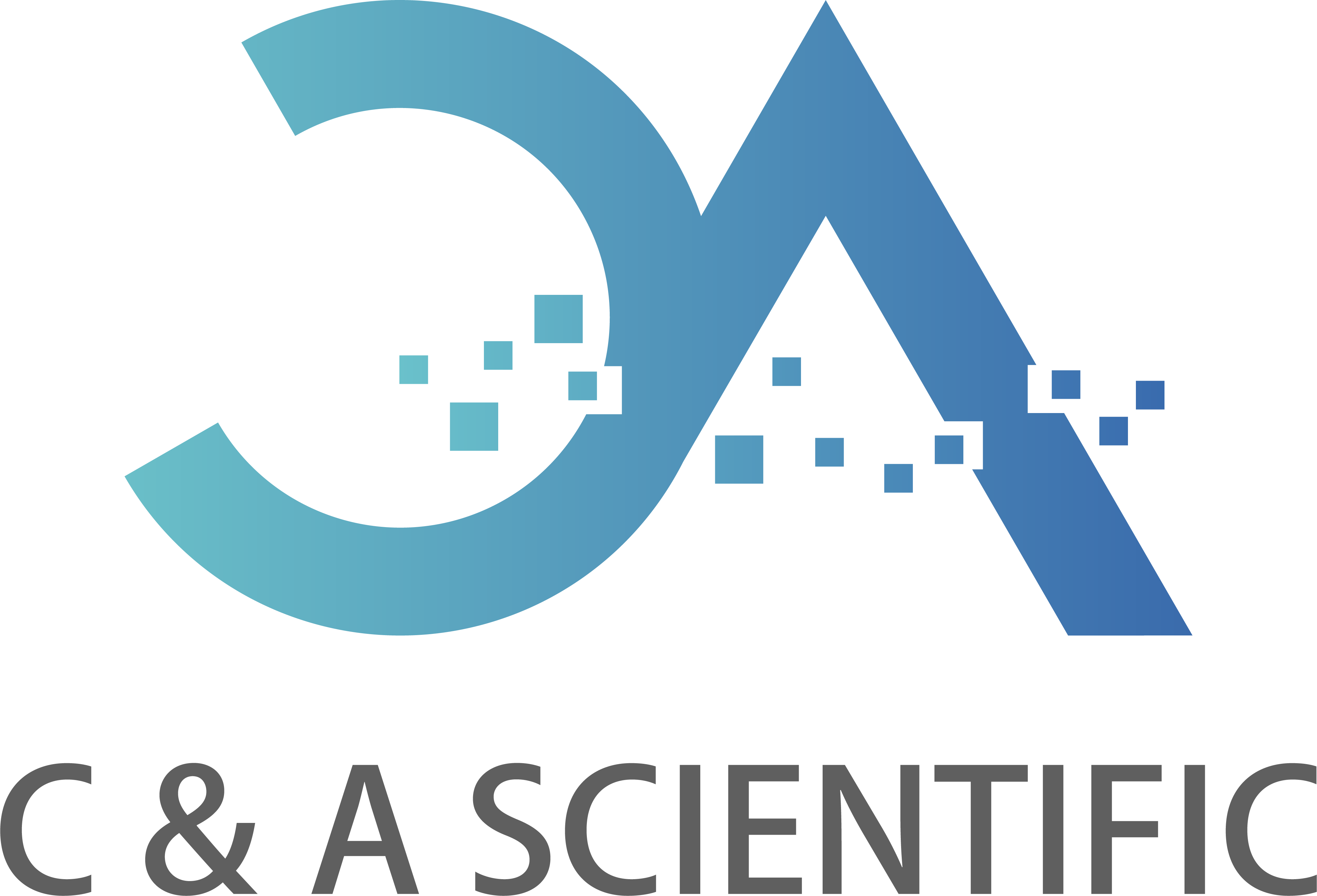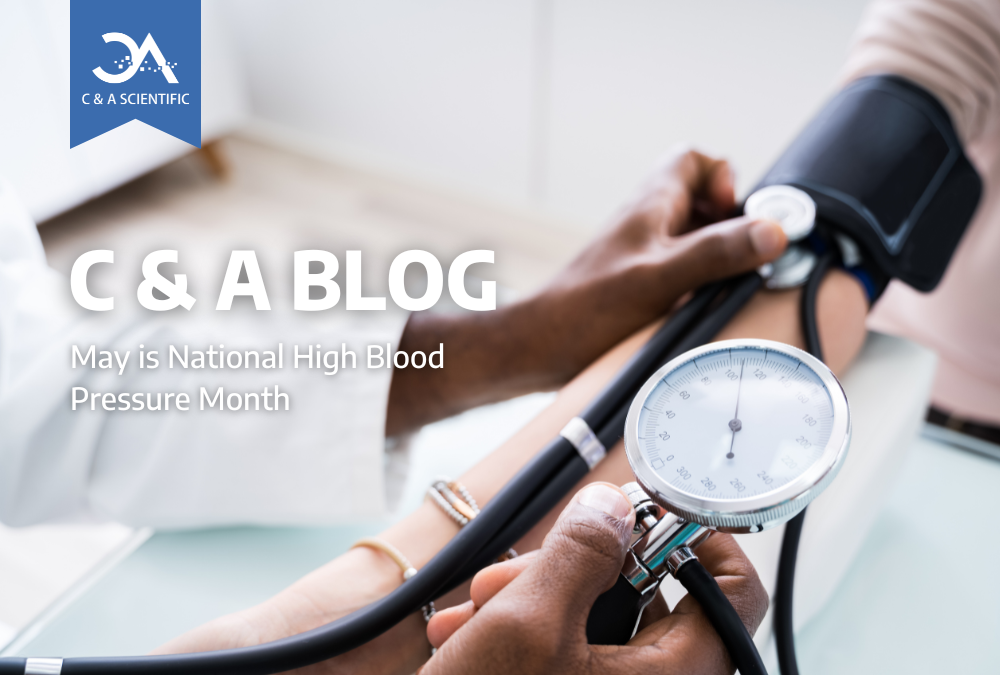
Did you know that 1 in every 3 American adults has high blood pressure? Nearly 68 million U.S. adults live with the condition, and around 20% are unaware they have it. Referred to as “the silent killer,” this condition can be hard to spot because it manifests in the body in unseen or unfelt ways.
C & A Scientific aims to inform you how to recognize high blood pressure to reduce your risk of developing severe diseases. Today we will discuss the symptoms, risks, and ways to reduce high blood pressure.
TABLE OF CONTENTS
- Understanding High Blood Pressure
- What is High Blood Pressure?
- How Blood Pressure Affects Your Circulatory System
- Checking Your Blood Pressure
- Blood Pressure Numbers
- Types of High Blood Pressure
- Risks of High Blood Pressure
- Symptoms of High Blood Pressure
- Dangers of High Blood Pressure
- Reducing High Blood Pressure
- Treatment for Primary Hypertension
- Treatment for Secondary Hypertension
- C & A Scientific’s Commitment
Understanding High Blood Pressure
What is High Blood Pressure?
Blood pressure is the force, or pressure, of blood flowing against the walls of your blood vessels. When too much force occurs, your blood pressure rises. High blood pressure is also known as hypertension.
How Blood Pressure Affects Your Circulatory System
The circulatory system provides organs and tissues with oxygenated blood. By creating pressure, your heartbeat propels blood through your blood vessels, such as capillaries, veins, and arteries. Two forces create blood pressure- systolic and diastolic pressure.
Systolic Pressure
Systolic pressure occurs when your heart beats, pumping blood out and into the arteries.
Diastolic Pressure
Diastolic pressure is the pressure in your arteries when the heart rests between beats.
Checking Your Blood Pressure
Health professionals measure blood pressure in millimeters of mercury. They record two numbers during their measurement. The number at the top of the recording is systolic blood pressure. This number represents your blood’s force as it courses through arteries.

The bottom number is diastolic blood pressure. This bottom number represents the pressure that remains in blood vessels between beats. This measurement can show how much blood your heart can pump and how much resistance to blood flow occurs in the arteries. Blood pressure is high if over 130/80 mm Hg.
Types of High Blood Pressure
There are two types of high blood pressure: primary and secondary hypertension.
Primary Hypertension
Primary hypertension is high blood pressure without a known cause. Causes may stem from hereditary or lifestyle choices, such as:
- Genetics
- Lack of exercise
- Obesity
- Stress
- Age
- Alcohol intake
Secondary Hypertension
In contrast, secondary hypertension results from underlying conditions like endocrine or kidney problems. Secondary hypertension includes physical symptoms such as the following:
- Sleep apnea
- Pheochromocytoma
- Cushing’s syndrome
- Thyroid issues

You may have secondary hypertension if you suffer from low potassium or high calcium. Secondary hypertension also occurs when individuals under thirty suffer from extremely high blood pressure without a family history or preexisting lifestyle factors.
Determine whether you have primary or secondary hypertension by having a doctor complete and analyze a blood test.
Risks of High Blood Pressure
Symptoms of High Blood Pressure
Although high blood pressure can manifest in ways that go unnoticed, you may experience the following symptoms:
- Blurry Vision
- Nausea
- Dizziness
- Chest Pain
- Breathing Difficulty
- Headaches
If your blood pressure is high, visit a doctor today to reduce your risk of developing other diseases or health conditions.

Dangers of High Blood Pressure
High blood pressure carries a variety of risks for the body. It creates continual stress on the body, which damages the circulatory system. This damage can increase the risk of heart failure, vision loss, kidney disease, and stroke.
Heart Failure
When damaged, blocked arteries block blood flow from reaching the heart.
Vision Loss
Vision loss occurs when blood pressure damages the eye’s blood vessels.
Kidney Disease
Kidney disease is the result of damaged arteries that can’t filter blood.
Stroke
Burst blood vessels that typically supply oxygen and blood to the brain.

Regarding long-term impact, high blood pressure leaves us vulnerable to developing metabolic syndromes that increase our risk of heart disease and diabetes. Ongoing research shows that high blood pressure may negatively contribute to hereditary conditions concerning memory, like Alzheimer’s and dementia.
Reducing Blood Pressure
Treatment for Primary Hypertension
If you suffer from primary hypertension due to hereditary factors, your treatment can include diuretics to reduce water volume and medications that can help relax artery walls. However, you should consider if you are in good health before starting medication that lowers blood pressure.
There are various ways to gradually lower your blood pressure if you suffer from primary hypertension due to lifestyle factors.

Exercise
Aerobic exercises, like walking, biking, or swimming, are great ways to lower blood pressure. One of the most effective ways to lower blood pressure is exercising regularly and losing weight through a healthy diet.
Diet
Limit the amount of food you consume high in saturated fats and sodium. Instead, add healthy foods such as fruits and vegetables. Bananas are a great source of potassium and work to reduce your blood pressure.
Minimize your caffeine intake. Coffee or drinks high in caffeine spike your blood pressure and can increase your risk of stroke and cardiovascular disease.

Quit Drinking and Smoking
Drinking and smoking both contribute to increased blood pressure.
Manage Stress
Stress and anxiety work together to constrict your blood vessels and increase your heart rate, which raises your blood pressure. When you remove your stress reaction, your blood pressure will reduce.
Try implementing meditation and yoga into your daily routine to ease your mind.
Learn more about developing and maintaining healthy habits by reading our blog post here.
Treatment for Secondary Hypertension
Natural treatments such as exercise, diet, quitting drinking and smoking, and managing stress will help reduce your blood pressure for both types of hypertension. However, if you have secondary hypertension, treating your underlying condition will quickly lower your blood pressure.

Consult your doctor to determine which blood pressure medication is right for your condition. Some medications, such as angiotensin-converting enzyme inhibitors, can cause blood pressure to go too low and potentially cause dizziness and fatigue.
C & A Scientific’s Commitment
C & A assists healthcare professionals in diagnosing and treating various conditions by providing distributors and individuals with the tools they need to make a difference in the medical and educational world.

C & A Scientific is a dedicated leader in improving the health and minds of people worldwide. We supply over 700 medical and STEM-inspired products to distributors and retailers seeking sensational customer service. Learn more about us and our story here.

